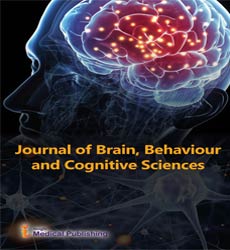Sensory Information which Promotes and Spontaneous Activity Decreases in the Locus Coeruleus
Bruce S McEwen*
Department of Neuroendocrinology, The Rockefeller University, York Avenue, USA
- *Corresponding Author:
- Bruce S McEwen
Department of Neuroendocrinology,
The Rockefeller University, York Avenue,
USA,
E-mail: mcewen.bruce@gmail.com
Received date: August 07, 2023, Manuscript No. JBBCS-23-18037; Editor assigned date: August 10, 2023, PreQC No. JBBCS-23-18037 (PQ); Reviewed date: August 24, 2023, QC No. JBBCS-23-18037; Revised date: August 31, 2023, Manuscript No. JBBCS-23-18037 (R); Published date: September 07, 2023, DOI: 10.36648/jbbcs.6.3.25
Citation: McEwen BS (2023) Sensory Information which Promotes and Spontaneous Activity Decreases in the Locus Coeruleus. J Brain Behav Cogn Sci Vol.6 No.3: 25.
Description
The mesolimbic dopamine system, which includes and connects the ventral tegmental area in the midbrain to the hippocampus, medial prefrontal cortex and amygdala in the forebrain, has been found to modulate activity directly or indirectly in almost all drugs with a known potential for abuse; as well as the nucleus accumbens in the basal ganglia's ventral striatum. In particular, the nucleus accumbens integrates experiential memory from the hippocampus, emotion from the amygdala and context from the PFC to help associate particular stimuli or behaviors with feelings of pleasure and reward. An addictive drug can also cause the continuous activation of this reward indicator system to encode previously neutral stimuli as cues that the brain is about to receive a reward.
Ventral Tegmental Area
Dopamine, a neurotransmitter responsible for feelings of euphoria and pleasure, is selectively released to accomplish this. Dopaminergic drugs alter the amount of dopamine released throughout the mesolimbic system. Consistent or excessive use of the drug can cause a long-term down regulation of dopamine signaling, even after the user stops taking the drug. As the brain begins to regularly anticipate the increased presence of dopamine and the associated feelings of euphoria, this can lead the individual to engage in mild to extreme drug-seeking behaviors; however, the degree to which this is problematic varies greatly depending on the drug and the circumstance. Certain drugs that cause hallucinations have had their central mechanisms significantly improved. At this point, it is fairly certain that agonism of serotonin receptors is largely responsible for the primary shared effects of a large pharmacological group of hallucinogens, which are sometimes referred to as classical psychedelics. Both the 5HT2A receptor, which appears to be the most essential receptor for psychedelic activity and the 5HT2C receptor, which is a significant target of the majority of psychedelics but does not appear to play a clear role in hallucinogenesis, are involved by releasing glutamate in the frontal cortex. At the same time, sensory information is promoted and spontaneous activity decreases in the locus coeruleus. While 5HT2C receptor agonism inhibits dopaminergic activity, particularly in the prefrontal cortex, 5HT2A activity has a net pro-dopaminergic effect. 5HT2A may promote late asynchronous excitatory postsynaptic potentials in the frontal cortex, a process that is inhibited by serotonin itself through 5HT1 receptors. This may explain why SSRIs and other drugs that affect serotonin typically do not cause a patient to hallucinate. This assertion, on the other hand, is called into question by the fact that many classical psychedelics actually have a significant affinity for 5HT1 receptors. This may better explain the difference between the pharmacology of serotonergic neurotransmission (even if promoted by drugs like SSRIs) and that of classical psychedelics, as the head twitch response, a test used to assess classical psychedelic activity in rodents, is triggered by classical psychedelics independently of beta-arrestin recruitment and is only produced by serotonin itself in the presence of beta-arrestins. However, more recent research suggests that classical psychedelic activity requires binding to the heterodimer as well. This may also be relevant to the pharmacological differences between the two. The SCN's inhibitory melatonin receptors then serve as a positive feedback loop. As a result, light inhibits the production of melatonin, which entrains the 24-hour cycle of SCN activity. The SCN also receives signals from other parts of the brain, so it’s (approximately) 24-hour cycle is not solely influenced by patterns of light. In point of fact, sectioned SCN tissue will exhibit daily cycle in vitro for a number of days.
Serotonergic Neurotransmission
The Pre-optic Anterior Hypothalamus (PAH) receives GABA ergic inhibitory input from the basal nucleus, which is not depicted in the diagram. Adenosine binds to adenosine receptors and inhibits the basal nucleus as it accumulates throughout the day from ATP metabolism. After that, the PAH is made active, which causes slow-wave sleep activity. It is known that caffeine inhibits sleep among other things by blocking adenosine receptors. The goals of research in the field of neuro psychopharmacology are numerous. These might include studying a brand-new chemical compound to see if it has cognitive or behavioral benefits, or studying an old chemical compound to learn more about how it works in cells and neural circuits. Cocaine, an addictive stimulant, has long been known to affect the reward system in the brain, increasing levels of dopamine and norepinephrine and eliciting a brief state of euphoria. These findings are important because they provide detailed insight into the neural circuitry involved in drug use and help refine existing as well as develop new treatment methods for disorders or addictions. Other cutting-edge studies have focused on genetics to identify specific biomarkers that may predict an individual's specific reactions or degree of response to a drug or their tendency to develop addictions in the future.
Open Access Journals
- Aquaculture & Veterinary Science
- Chemistry & Chemical Sciences
- Clinical Sciences
- Engineering
- General Science
- Genetics & Molecular Biology
- Health Care & Nursing
- Immunology & Microbiology
- Materials Science
- Mathematics & Physics
- Medical Sciences
- Neurology & Psychiatry
- Oncology & Cancer Science
- Pharmaceutical Sciences
